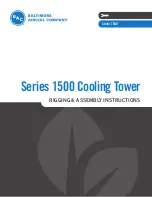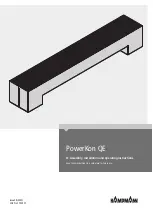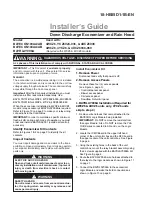
CODUME
Page 13
5:
Union connections (if mounted)
6:
Remote sensor
Continuous regulating valve (not Airmaster
delivery)
Dirt trap (not Airmaster delivery)
Ventilation
Open water flow and aerate the system using the air release valve (4). After a short while the water flow should be silent,
with no noise from air.
The aeration is carried out with fully open valves, dismounted heat-retaining thermostat (TV) and thermal motor
(TM).
Adjustment of motorised valve
The unit comes with regulating valve (3) type TRV-2S preset to 6 – fully open valve. The regulating valve is preset
according to the diagram below, such that the prescribed flow is achieved with differential pressure of
∆
H, which is
available to the unit in nominal operating conditions.
Remember that the unit must be aerated and rinsed prior to adjustment.
It is important to preset the valve so the maximum water flow is not exceeded.
If the differential pressure over the regulating valve is greater than 30 kPa, you risk a flow noise from the valve.
Diagram for determination of pressure loss in the water circuit and for presetting the regulating valve (3) TRV-2S.
Setting example:
Water flow:
15 l/h
Desired drop in pressure:
10 kPa
Setting value:
2,5
Presetting key for TRV-2S:
Plumbing no. 403399-411
Calculation of heating needs
The heat requirement for heating air from temperature
after heat recovery to the desired supply temperature is
calculated at 20
°
C and 101.3 kPa:
Q = 0.34
⋅⋅⋅⋅
q
v
⋅⋅⋅⋅
(IT – t)
[ W ]
where
q
v
air volume in m
3
/h
IT
desired supply temperature
t = 15.9
°
C
temperature prior to post-heating
surface
Conditions:
- outdoor temperature –12
°
C
- room temperature 22
°
C
- temperature rate of efficiency 82%














































